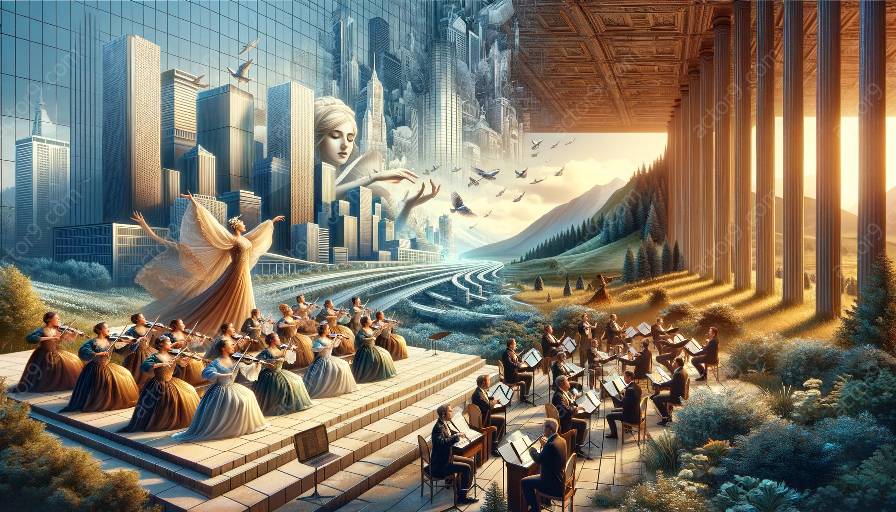Opera as an art form has constantly evolved and adapted to changing times and modern sensibilities. One of the most significant evolutions in contemporary opera has been the incorporation of visual arts and multimedia. This topic cluster will explore the intersection of visual arts, multimedia, contemporary society, and opera performance, highlighting how these elements interact and enrich the modern opera experience.
Modern Opera and Contemporary Society
It is crucial to understand the role of opera in contemporary society to appreciate the significance of incorporating visual arts and multimedia. In the 21st century, opera has strived to remain relevant and accessible to diverse audiences. Visual arts and multimedia offer new ways to connect with modern audiences, who are accustomed to immersive visual experiences.
Engaging New Audiences
By incorporating visual arts and multimedia, modern opera has the potential to engage new and younger audiences. Visual storytelling through multimedia elements can make opera more accessible and captivating to individuals who may be less familiar with traditional operatic performances. This inclusivity is vital for the continued relevance of opera in contemporary society.
Enriching the Opera Performance
Visual arts and multimedia have the power to enhance the emotional impact and storytelling potential of opera performances. By integrating elements such as video projections, digital art, and interactive multimedia, opera productions can create visually stunning and thought-provoking experiences for the audience. These innovations open up new creative possibilities for directors, set designers, and multimedia artists working in collaboration with opera companies.
Complementing Musical Narratives
In modern opera, visual arts and multimedia can be utilized to complement and expand upon the musical narratives. For example, projections of symbolic imagery or historical footage can add layers of meaning to the storyline and deepen the audience's understanding of the opera's themes. This synergy between visual and musical elements creates a multidimensional and immersive experience that resonates with contemporary audiences.
Technology and Innovation
The integration of visual arts and multimedia in modern opera is closely intertwined with technological advancements. From elaborate projection mapping to interactive digital installations, technology offers opera creators the tools to push boundaries and experiment with innovative storytelling techniques. This intersection of technology and artistry reflects the spirit of contemporary innovation and creativity.
Collaborative Opportunities
Incorporating visual arts and multimedia encourages collaboration across artistic disciplines. Opera companies can partner with visual artists, filmmakers, digital designers, and creative technologists to realize ambitious productions that merge traditional operatic prowess with cutting-edge visual and multimedia elements. This collaborative approach fosters cross-pollination of ideas and expertise, enriching the artistic landscape of modern opera.
Expanding Artistic Expression
By embracing visual arts and multimedia, modern opera expands its artistic expression and pushes the boundaries of traditional performance. This evolution aligns with the contemporary ethos of experimentation, diversity, and pushing artistic frontiers. The integration of visual arts and multimedia opens up possibilities for opera to resonate with a broader spectrum of artistic sensibilities.
Overall, the incorporation of visual arts and multimedia in modern opera represents a dynamic evolution of the art form, aligning it with the tastes and expectations of contemporary society. By enriching opera performances with immersive visual experiences and innovative storytelling, this integration ensures that opera remains a vibrant and relevant cultural force in the modern world.































